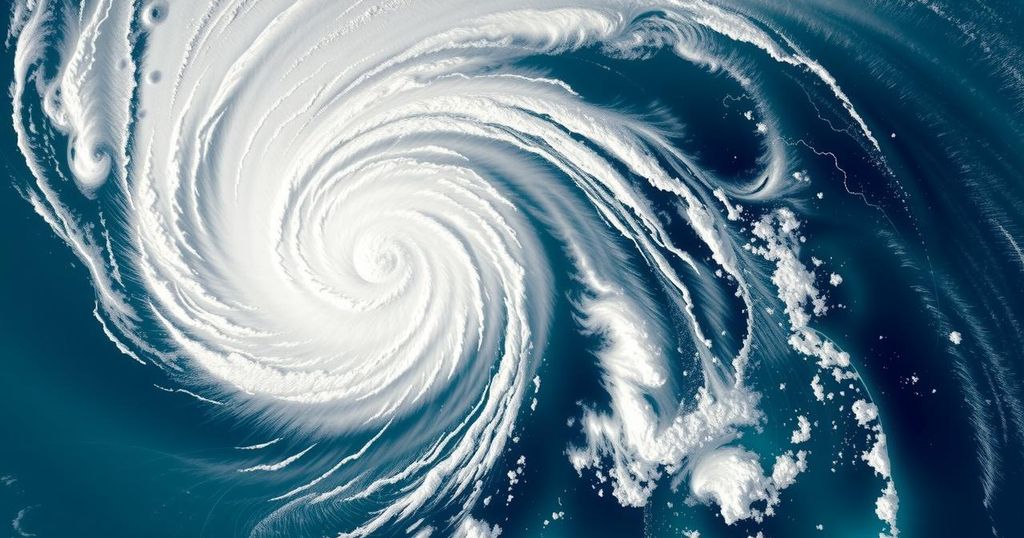Mayotte is grappling with the ramifications of Tropical Storm Dikeledi, following the devastation of Cyclone Chido. Residents have been instructed to take shelter and prepare for severe weather, as Dikeledi threatens further flooding and destruction. With previous losses still fresh, emergency personnel are on high alert, illustrating the ongoing struggles faced by this impoverished territory of France amidst a challenging cyclone season.
On January 12, the French territory of Mayotte faced a new tropical storm named Dikeledi, mere weeks after enduring the catastrophic effects of Cyclone Chido. Authorities advised residents to remain indoors and prepare for severe weather, as the storm brought heavy rainfall and strong winds to the already battered islands. The cyclone, which impacted Mayotte predominantly on December 14, caused significant destruction, resulting in at least 39 confirmed fatalities, with over 200 individuals still unaccounted for and more than 5,000 injured. Dikeledi had weakened to a tropical storm after passing over Madagascar, though meteorologists warned it might regain strength as it approached Mayotte.
With previous devastation still evident, the French meteorological service issued a red alert due to the risk of flooding and landslides. Emergency shelters were opened, and security precautions were heightened, especially in communities heavily affected by Cyclone Chido. Notably, the damaged international airport remained closed amid ongoing recovery efforts. The Mayotte Prefecture stated that “the danger to the population persists,” emphasizing the need for preparedness in light of unpredictable weather phenomena. Moreover, the French government mobilized over 4,000 emergency personnel, highlighting the seriousness of the situation.
Mayotte is a densely populated region, home to approximately 320,000 residents, in addition to around 100,000 undocumented migrants from neighboring countries. The aftermath of Cyclone Chido has left many in dire conditions, exacerbated by residents’ feelings of neglect from the French government. As the region continues to grapple with the fallout from these recent storms, officials are acutely aware that the cyclone season runs from November to April, traditionally bringing numerous storms to the area. The recent cyclones underline the regional vulnerability to extreme weather events and the long-term challenges faced in disaster recovery.
Mayotte, an archipelago in the Indian Ocean, recently suffered from a devastating cyclone which has been described as the worst in nearly a century. This cyclone, Cyclone Chido, resulted in widespread destruction, loss of life, and left many people displaced. The circumstances surrounding this disaster reflect broader issues within Mayotte, particularly the impact of being one of the poorest regions within the European Union, facing ongoing challenges from both natural disasters and social inequities among its residents, including undocumented migrants. The territory is currently navigating the aftermath of Cyclone Chido while simultaneously preparing for a new storm, illustrating the precarious situation in which the local population finds itself amidst the cyclone season.
In conclusion, Mayotte has emerged from a calamitous cyclone only to confront another tropical storm, increasing the urgency for recovery and disaster management. With significant loss of life and ongoing infrastructure challenges, local and international response teams are mobilized to safeguard the population’s safety. The recent events have highlighted the critical state of emergency preparedness within the poorest territory of France and underscore the importance of international support in disaster recovery efforts.
Original Source: www.latestly.com






